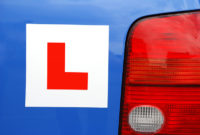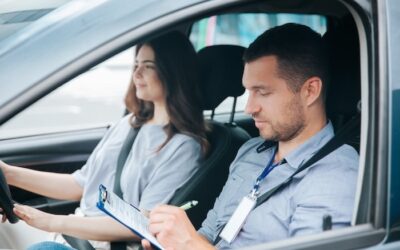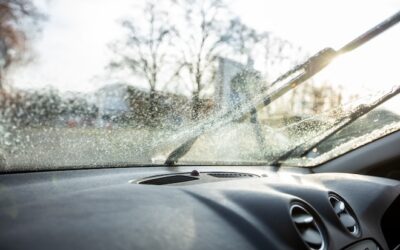If you are teaching a learner to drive you have many responsibilities. It’s important that, as a supervisor, you know what your responsibilities are.
Where to put L plates
One of your many responsibilities is to make sure the L plates are placed correctly. L plates should be visible from both the front and back of the vehicle. There are no specific places to put them, as you’ll need to think about where to put L plates on your vehicle, as what might be a good place on one car might make the L plates difficult to spot on another.
L plate regulations
The DVSA (Driver & Vehicle Standards Agency) have strict rules governing the display of L plates.
- The L plates themselves should be 178 x 178mm in size, and there are specific dimensions for the layout of the plate itself.
- They should be visible from both the front and rear, meaning you will need to display at least two on your vehicle.
- L plates should only be displayed while a learner is driving the vehicle.
- In Wales, it is permitted to use D plates, either instead of, or as well as, L plates.
In order to make sure your L plates comply with the DVSA regulations, make sure you buy them from a reputable retailer. If you are buying L plates online, make sure it clearly states they are suitable for use in the UK, as the Republic of Ireland uses L plates with slightly different dimensions.
Types of L plate
Once you know the regulations on L plates and have planned where you’re likely to need to display them on your car for them to be fully visible from the front and back, you have to decide between the different types available.

Each type have their pros and cons. It will be easier for you to know which type will work for you when you know where you’ll need to display them. There are four main types of L plates:
- Magnetic L plates
These are the most popular, as they are easy to attach and remove. When shopping for magnetic L plates, be sure to buy high quality ones with a good magnet, and place them on a clean, flat surface, to reduce the likelihood of them falling off.
- Self-cling L plates
These can be placed on windows. They are best avoided if possible, as they can obscure vision, but can provide an alternative for cars where the body is plastic, or the shape makes it difficult to use magnetic L plates.
- Self-adhesive L plates
These can be stuck onto the car like stickers. They should be used on cars that are only being used by learners, as they are difficult to remove and can damage the paintwork when taken off.
- Tie on L plates
These can be attached to the car’s bumper using string. While there are still some models of car that L plates can be attached to in this way, it is often not an option on modern cars.
How else should I prepare a car for a learner?
As an experienced driver, the driving itself has probably become second nature to you. Learners however, have to think about every aspect of their driving, as well as the road itself. You should therefore prepare your car for a learner by removing distractions and decluttering.
- Turn the radio off
The sound of the radio can be an unnecessary distraction. Don’t just turn it down, turn it off, and allow the learner to concentrate on their driving, not singing along to their favourite song.
- Remove anything hanging from the rear view mirror
Items hanging from the rear view mirror are not only distracting, they can be a hazard in themselves should they fall off.
- Remove any stickers obscuring vision through the windows
Stickers in the rear window can be particularly obstructive to vision. While it might not bother somebody who is used to the vehicle, for a learner they can not only be distracting, they can make it harder to judge distances when parking. Your front windscreen will hopefully be relatively clear of obstructions, but make sure you remove anything unnecessary, for example, old parking tickets.
- Push down the headrests on the back seats
Many cars let you push down the headrests on the back seats. This will improve vision through the back window.
- Remove excess weight from the boot
A heavy car doesn’t handle the same as a light one. As it’s unlikely a learner will take their test in a car with a full boot, make sure it’s empty before they use your car for practice.
- Slim down your key chain
There’s nothing more distracting than dangly keyrings, or bits of string banging your leg or jingling around every time you go round a corner, so take anything unnecessary off of your keyring.
Now you know how to prepare your car for a learning – find out more about the responsibilities of a supervisor with our guide to supervising a learner driver
Remember to always make sure your learner has the right learner driver insurance before taking to the wheel.



